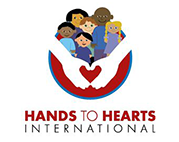Yesterday I watched a Good Morning story about an organization that is doing very similar work to HHI, but with a very different business model. The story left me thinking about charitable organizations at large – particularly ones serving people overseas.
So many charities are missing two critical pieces which any smart business would have in place. First is a plan for long-term sustainability (this is not constantly fund-raising for the entire budget), and the second is a method to ensure the company/charity’s services provide a way to support the community it resides in. No problem – particularly that of the need for thousands of orphanages – exists in a vacuum. Orphanages arise from a multitude of converging problems — HIV/AIDS, disease, war/conflict, extreme poverty, lack of opportunity for women, etc., therefore in addressing the crisis of children having to survive in orphanages, typical charity only goes so far. Any program can help a few children in one orphanage, but who is ensuring that the cycle of poverty slows, that the women who are birthing these children are not forced to place their children in orphanages in the first place? Only by addressing the complex web of issues, with a financially sustainable plan, can we meaningfully impact the orphan crisis – and I am confident that HHI is accomplishing both of these goals.
HHI’s is built on business principles that of having those most invested in our success become the “investors” in HHI’s existence and which will lead to all of our operations in India to become 100% financially self-sustaining in 3-5 years.
Americans are likely the most generous and philanthropic citizens on the globe and we have endless options of where to give our hard-earned dollars! I encourage people to look beyond the glossy brochures, pretty websites and all else and learn how to invest their dollars in charity as they would in a any other investment. Find out – what is the service? How many people benefit? What are the organizations results? And how will you donation dollars truly become a part of a real and sustainable solution.
And, in conclusion I want to answer a few of these questions in regards to HHI. In our first operating year in India we planned to lead 4 trainings, for 80 women who would serve a few hundred children, our budget was just shy of $200,000. Our results were that we lead 21 trainings, for 285 women who are bettering the care for more than 1,470 children and that those children have demonstrable and dramatic improvements in their health (beyond any of our predictions). Oh, and we did this with less than half of our budget – I’ll let these results speak for themselves!









